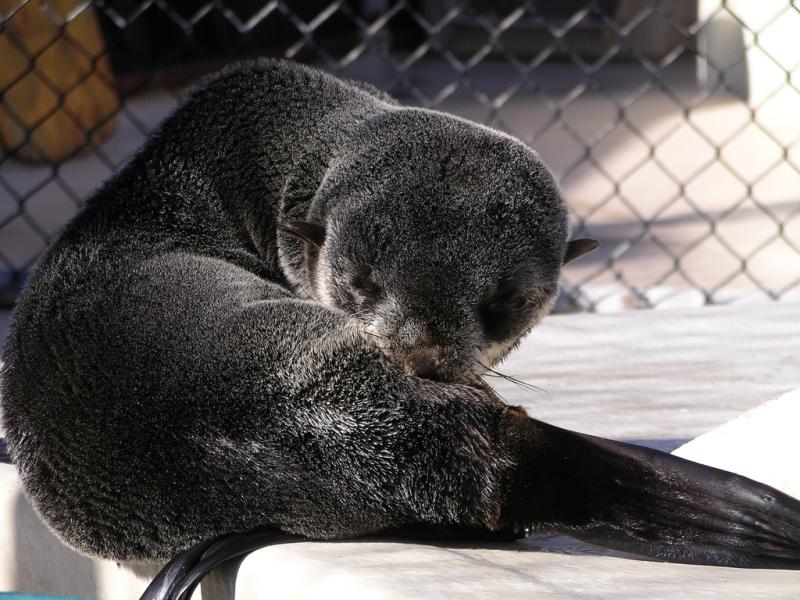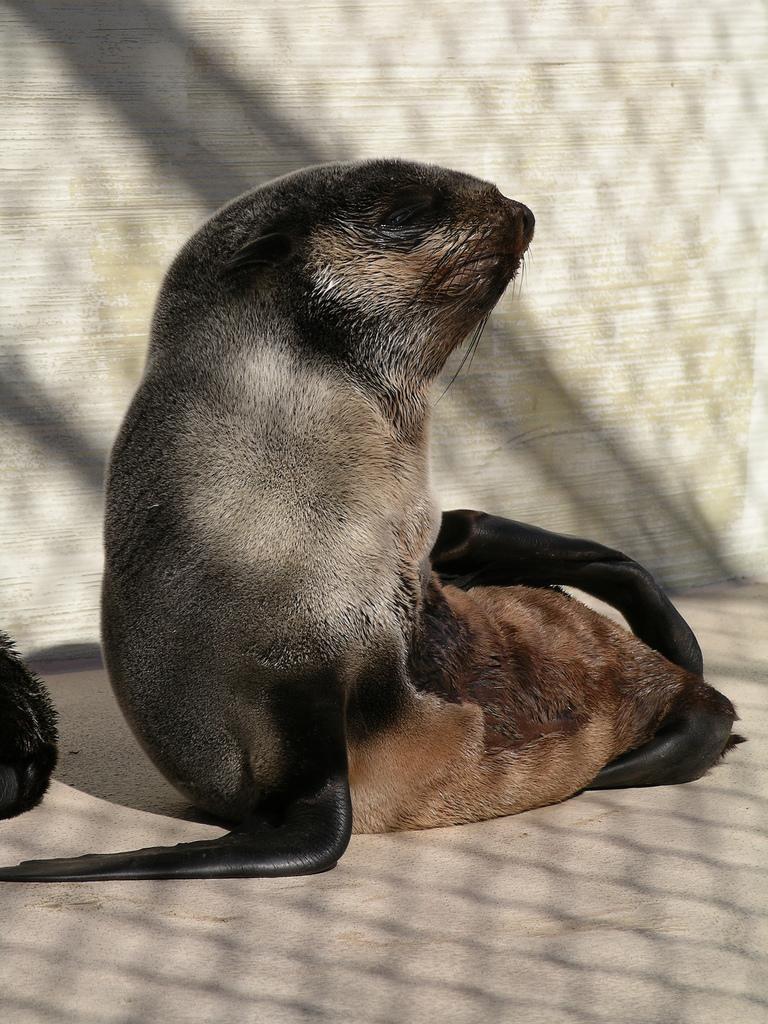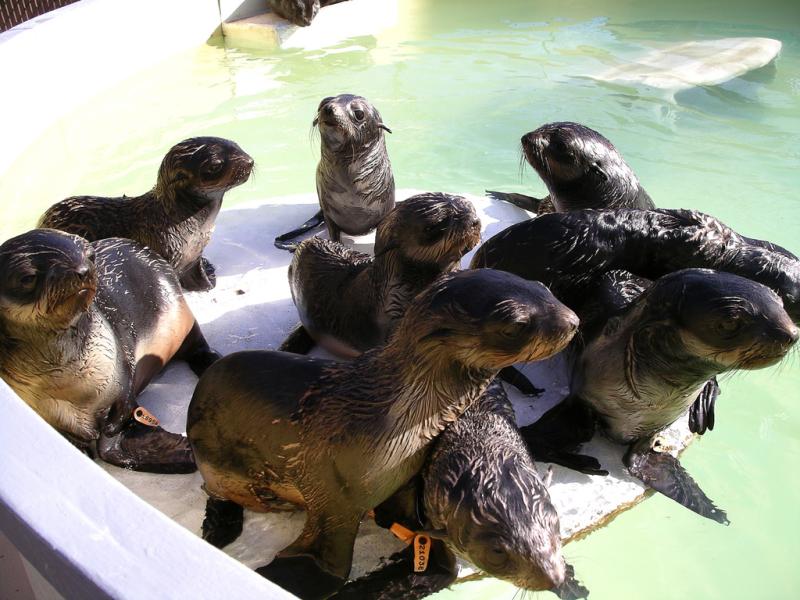Wildlife North America . com North American Animals - mamals, birds, reptiles, insects |
Northern Fur Seal (Callorhinus ursinus)
Northern Fur Seal pup. Marine Mammal Center in the Marin Headlands, California. Photograph by Gina Sanfilippo. Some rights reserved. (view image details) 
Northern Fur Seal pup. Marine Mammal Center in the Marin Headlands, California. Photograph by Gina Sanfilippo. Some rights reserved. (view image details) 
Northern Fur Seal pups. Marine Mammal Center in the Marin Headlands, California. Photograph by Gina Sanfilippo. Some rights reserved. (view image details)
NORTHERN FUR SEAL FACTS
DescriptionThe Male Northern Fur Seal is reddish or black in color. Adult females are usually gray or brown. The pups have black fur. Pups usually have lighter markings on the nose and underside. Adults have a mane, more noticeable in the male. The fur on the front flippers stops at the wrist. The eared seals (sea lions and fur seals) have small external ears. They can pull their rear flippers up under their bodies and use to them move around on land. Other Names Alaska Fur Seal Size Length: males 2.1m; females 1.4m. Males are much larger than females. Males weigh 136-279; females weigh 30 - 50kg. Environment Northern Fur Seals spend most of their time in the cool water of the North Pacific Ocean. During the breeding season, they come on land at island breeding grounds. Food fish and squid, occasionally birds Breeding One pup (sometimes twins) is born after a gestation of 11 - 12 months. The pup is weaned after about 4 months. Pups remain on land for 60-70 days. Range North Pacific Ocean to the Bering Sea. Breeds on islands near Russia, Alaska, and California. Conservation Status The conservation status in the 2004 IUCN Red List of Threatened Animals is "vulnerable". Classification
Home | Mammals | Reptiles | Birds | Insects | Privacy Policy | Disclaimer | Contact Us |